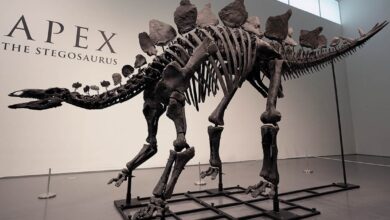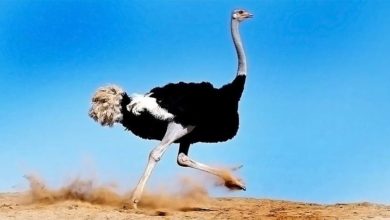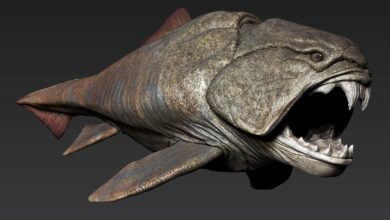Pangaea (Pangea) – supercontinent
Pangaea (Pangea) – when all continents were one “Mother Earth”
Supercontinents have arisen several times in the history of the Earth. Pangea was not the first, but was the largest one. It is also the most famous as it existed as the only continent in the world for tens of millions of years. It even became synonymous with the primeval Earth, on which terrestrial life developed as we know it today.
Pangea was a supercontinent that has existed for about 160 million years – from the mid-Paleozoic to the mid-Mesozoic. Its name comes from the Greek language and means the same as “All Earth/lands” or “Mother Earth”. Its formation was the result of a long process, as a result of which the ocean that existed in the first half of the Palaeozoic was closed, and the two great lands – Laurasia in the north and Gondwana in the south – merged into one continent. It happened about 335 million years ago.
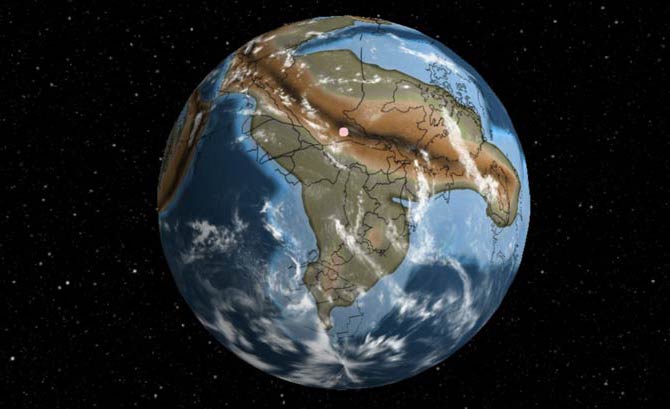
Birth of Pangea
Initially (i.e. in the early Carboniferous), Pangea was not the only large continent – to the north of it was another continent (today’s Siberia). Already at the time of the formation of Pangea, there was a huge diversity of climate.
The southern part of the former Gondwana was covered with an ice sheet, which remained there until the Permian, while in the equatorial zone the climate was hot and dry. In addition, the remnants of previously existing seas gave rise to vast wetlands with lush forests – in these places today there are deposits of coal.
Gondwana, the southern supercontinent, existed twice – in the Paleozoic era (before Pangea) and after its breakup in the Mesozoic era and at the beginning of the Cenozoic era.
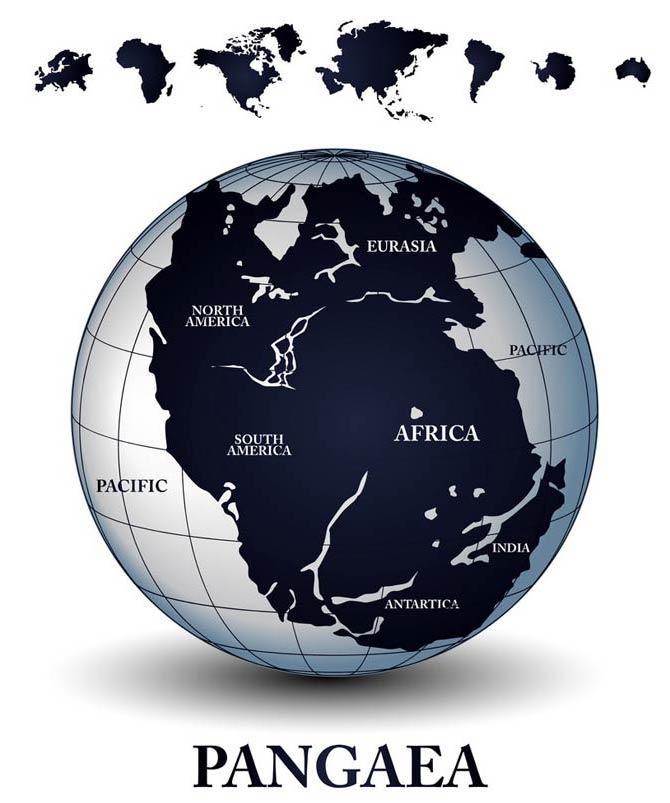
The heyday of life in Pangea
There were drastic changes in the climate in Late Carbon. It was related, inter alia, to the collision with the minor supercontinent called Euramerica (connected Europe and North America also called Laurussia). At that time, the largest area of carbon formation in the history of the world was created. Around the South Pole, there was still a huge ice sheet that was storing huge amounts of water.
The result was a significant drop in sea level – many shallow coastal and inland seas dried up, giving rise to vast, warm wetlands. Surprisingly lush vegetation developed in the northernmost areas of Pangea, even though the climate there was quite cool. The decline in sea level and the disappearance of shallow seas have caused the mass extinction of many aquatic organisms. It is believed that up to 40% of daylilies and 80% of ammonites died then.
The collision of Euramerica with the main part of Pangea led to violent (of course on a geological scale) orogenic movements. This period is called the Hercynian orogeny (folding). During this time, numerous mountain ranges were formed in Europe as well as in North America. During this time, there were also significant temperature differences between the equator and areas at longer latitudes.

Interestingly, there was a fairly sharp border between the cold and hot climate zones. There is evidence that there was an ice sheet at an altitude of 30 degrees south, while just beyond that latitude, a hot subtropical climate prevailed. The existence of such a clear border has not been satisfactorily explained to this day. Another mystery is that at the same latitudes as the glacier to the south, the northern climate was warm, with swamps bustling with life. On the land that was then almost at the North Pole (present-day Siberia), typical tundra vegetation grew, which also proves that it was much warmer in the north than in the south.
We know about the differences in the climate between the north and south from fossils and plant prints preserved in hard coal deposits. In the north, there were thermophilic lepidodendrons and sigilaria, while in the south plants adapted to the cold climate grew. In the far north and in the southern hemisphere, there were trees and shrubs, which today can be seen with annual rings – this is evidence of the seasons there.
At the end of the Carboniferous, things changed again. The ice sheet in the southern area began to melt, causing sea levels to rise. The north and south of Pangea have become more similar in terms of climate. In many places, extensive forests of club mosses (Spinulum annotinum) and horsetails (Equisetidae) began to disappear, but the importance of spore ferns increased, which indicates that the climate has cooled. It was a harbinger of drastic changes taking place in the Permian.
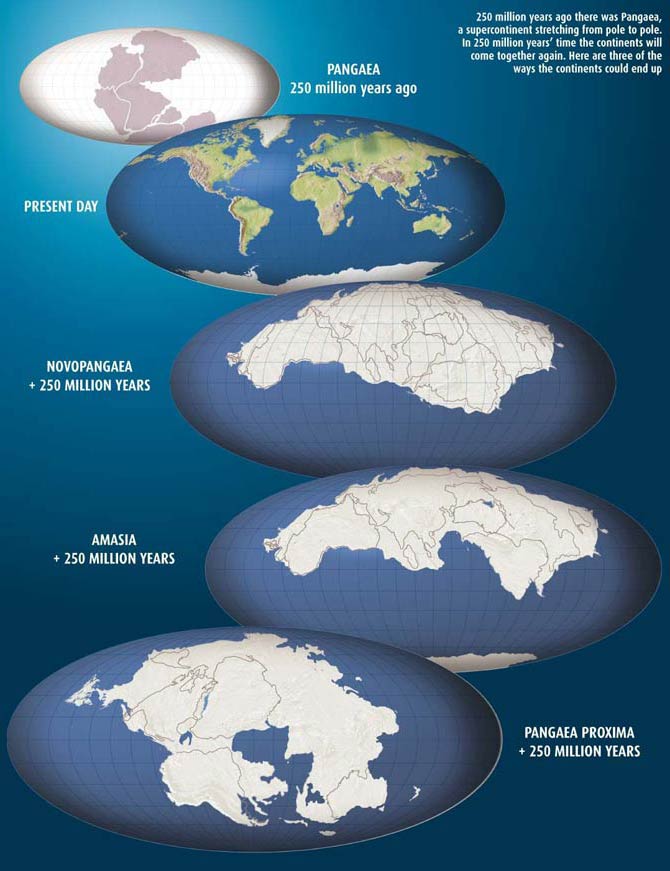
Pangea in the Permian
Pangea finally formed in the Permian when it was joined by Siberia, previously a separate land. Pangea was thus practically the only large continent in the world – the only major unconnected land were the islands (today’s China and Southeast Asia), one of which will join Pangea later.
The Permian climate did not differ much from the present one – the climatic zones in the world were similar and the temperatures were also similar. Therefore, the Pangea of this period is characterized by the greatest diversity of plant zones in the entire history of the Earth – apart from the present situation, caused by numerous and relatively rapid climate changes due to alternating glaciations and interglacials. Climate diversity was due to the existence of mountain ranges formed during the formation of Pangea, which shaped the directions of winds and the amount of precipitation.
The climate of this supercontinent was relatively dry. This was due to the fact that vast tracts of land were remote from the ocean. That is why the Carboniferous forests of club moss and horsetail almost ceased to exist – except for the eastern regions, surrounded by warm seas providing high humidity and high temperatures. In addition, in the Permian there was a massive drying up of wetlands – the visible effect today is most of the known salt deposits. Plants adapted to wet conditions gave way to dry-loving – it was during this period that the gymnosperms, especially coniferous plants, developed rapidly.
At the very end of the Permian, Pangea witnessed the biggest extinction in the history of the Earth. By the end of the Permian, up to 94% of living species were probably extinct in two phases. This was sudden – both phases probably lasted about a million years.
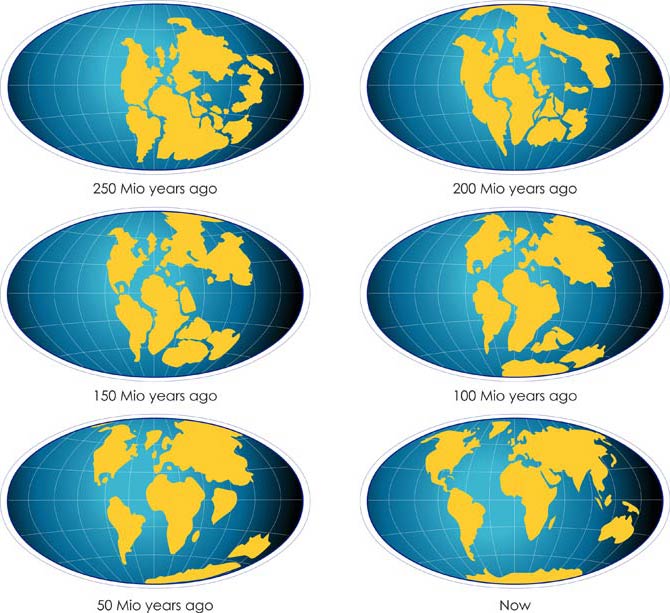
The only continent – Pangea in the Triassic
In the Triassic, all major lands finally joined together – Pangea became the only continent on Earth. During this period, it had an area of approximately 130 million km2. There were of course a few smaller lands that were part of what is today Indochina, Iran, or Tibet, but they were then the size of today’s large islands.
Although Pangea began to disintegrate at the end of the Triassic, for tens of millions of years the newly formed continents lay close enough to each other that different organisms could easily move between them. This land was a rather compact area, with the exception of the Tethys Basin, which cut inland from the east. It was stretched in a meridional direction and most of it was in the southern hemisphere.
Pangea’s climate was hot and dry for most of the area. Even areas in today’s temperate zone were so remote from the sea that it had no effect on the climate. Therefore, most of the supercontinent was very hot in summer and cold in winter. This resulted in significant temperature differences between north and south, resulting in violent monsoon winds blowing virtually across the continent.
The existence of only one large land allowed the organisms to have no difficulty in spreading, but the harshness of the climate made the organism variation relatively low. However, their remnants are found on all continents today – they are the best and most famous evidence of the existence of Pangea. It should not be forgotten that all groups of terrestrial organisms that exist today are derived from these forms.

Breakup of Pangea
At the end of the Triassic, Pangea began to slowly disintegrate. This process ended in the Jurassic approximately 175 million years ago. The Sea of Tethys was breaking more and more inland, eventually becoming a deep extension of the ocean separating Europe from Africa. The Americas were then separated. In this way, Pangea gradually divided into three parts.
The southern continent called Gondwana consisted of what is now South America, Africa, Australia and Antarctica, and the Indian and Arabian peninsulas. In the north, there was North America and a third continent formed by the combination of the lands of Siberia and China today. Europe in its present form did not exist – in its place, there were many islands covered with coniferous forests, and most of the present-day continent was under water.
The climate of Pangea at the end of its existence was characterized by a warming climate. The expansion of Tethys’ surface made the influence of the sea more felt. The climate has become more humid and the ice cap to the south has almost disappeared. The temperature differences between the poles and the equator were relatively small. The zone was covered with vegetation typical of tropical conditions, extending up to 60 degrees north and south longitude. Even in the areas beyond the Arctic Circle, groups of ferns grew that did not tolerate very negative temperatures.
Pangea existed at a time when land life began to thrive on Earth. She witnessed the emergence of vertebrate dominance. Its existence meant that these groups could spread all over the Earth, and its disappearance – the independent evolution of organisms on different lands and the diversity of life.
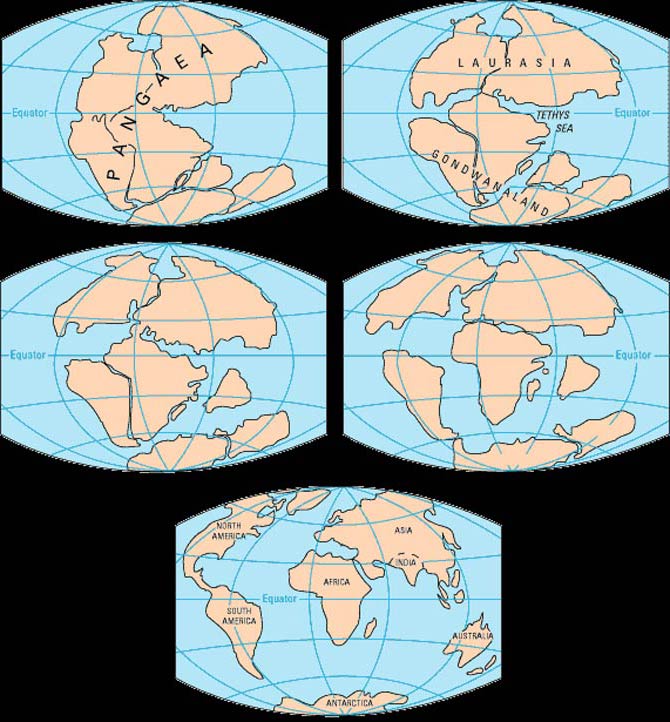
Pangea – interesting facts
- In English, Pangea is called also Pangaea, hence this name appears in some illustrations in the article.
- Pangea was smaller than today’s continents combined, as parts of today’s Europe and Asia had not yet risen above sea level.
- The period of Pangea’s existence was the only one in history when both the North and South Poles were on land (in addition, on the same continent).
- Pangea is the name of an alternate Earth in Sam Kieth’s comic book The Maxx. It is inhabited by intelligent beings who have not developed a technical civilization, considering it redundant. Pangea, however, exists only in the mind of the title character who dreams of being a hero in a world devoid of modern technology. The author of the comic deliberately chose the name “Pangea” because he associated it with the primeval, unchanged by man nature.
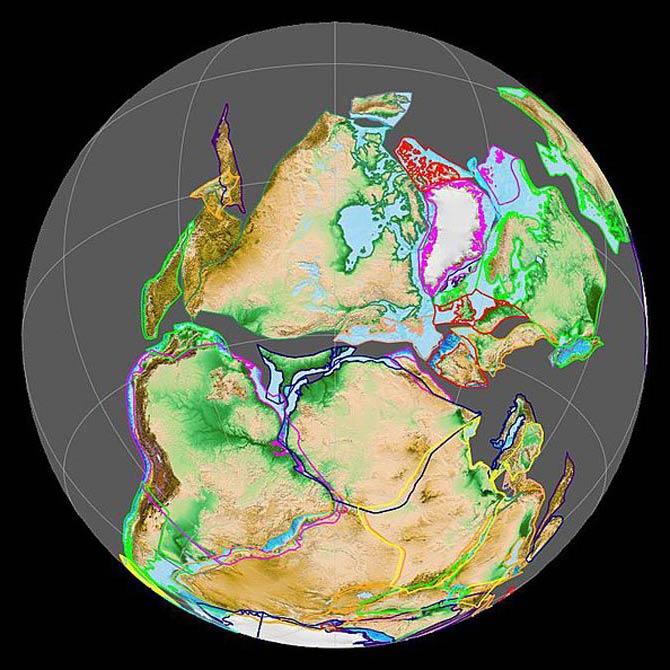
Recommended
- Mass Extinction
- History of animals and plants extinction
- Extinction of dinosaurs. Why are they extinct?











